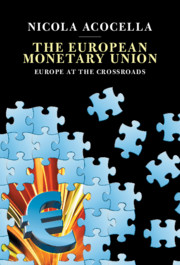Book contents
- The European Monetary Union
- The European Monetary Union
- Copyright page
- Dedication
- Contents
- Figures
- Tables
- Preface
- Acknowledgments
- Abbreviations
- Part I The Historical and Institutional Background
- Part II Institutions and Policies in Action
- 4 Asymmetries, Macroeconomic and Microeconomic Imbalances
- 5 The Great Recession
- 6 Policies and Institutions Put to the Test of the Great Recession
- 7 Asymmetries, Imbalances, Signals, and Incentives to Change
- Part III Lines of Reform of EMU Institutions
- References
- Index
7 - Asymmetries, Imbalances, Signals, and Incentives to Change
from Part II - Institutions and Policies in Action
Published online by Cambridge University Press: 19 August 2020
- The European Monetary Union
- The European Monetary Union
- Copyright page
- Dedication
- Contents
- Figures
- Tables
- Preface
- Acknowledgments
- Abbreviations
- Part I The Historical and Institutional Background
- Part II Institutions and Policies in Action
- 4 Asymmetries, Macroeconomic and Microeconomic Imbalances
- 5 The Great Recession
- 6 Policies and Institutions Put to the Test of the Great Recession
- 7 Asymmetries, Imbalances, Signals, and Incentives to Change
- Part III Lines of Reform of EMU Institutions
- References
- Index
Summary
Chapter 7 focuses on the consequences of the EMU institutional set up. It shows that the signals and information about the imbalances that can arise do not flow evenly and effectively across states, contrary to what happens within them, and are often noisy or carry wrong messages to markets and governments. Thus, they do not offer sufficient incentives for change in the right direction. This is in contrast with both the orientation of the founding fathers of the Union and the literature before the creation of the EMU, which practically delegated most of the burden for integration, alignment, reforms, etc. to private institutions (markets). The common currency and the common monetary policy should be conceived as a tie to the action of private and public agents, not only because of the constraint imposed by the single currency (the external tie), but also for the conservative orientation of the ECB. These should have imposed a strong network of ties in particular on the conduct of the agents in the countries with higher inefficiencies, by indicating – almost naturally – the route to follow, compelling them to change their conduct and enacting the needed reforms.
- Type
- Chapter
- Information
- The European Monetary UnionEurope at the Crossroads, pp. 208 - 232Publisher: Cambridge University PressPrint publication year: 2020

